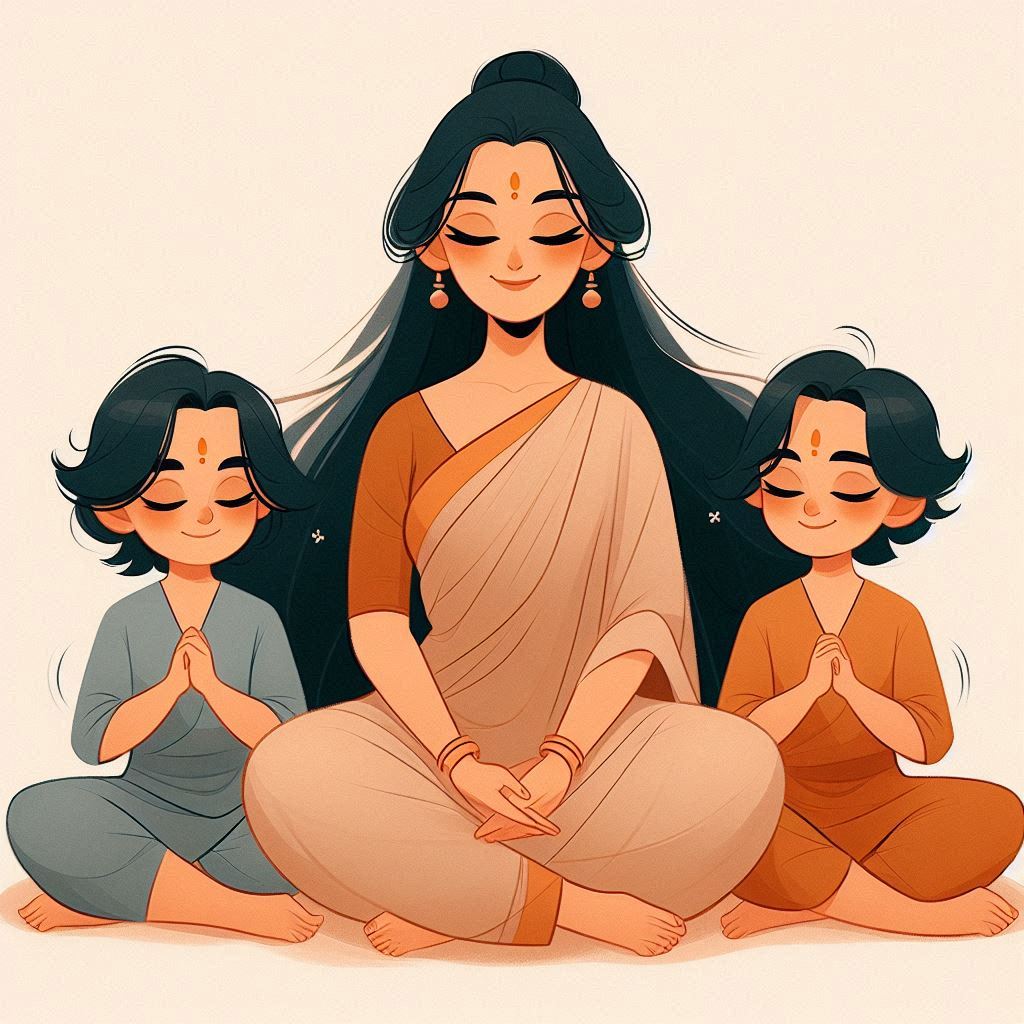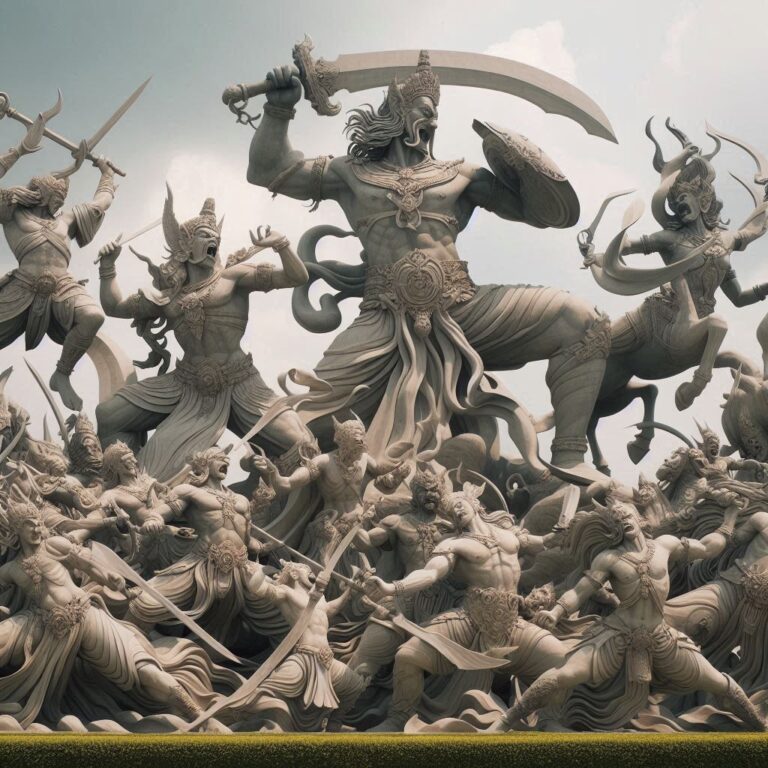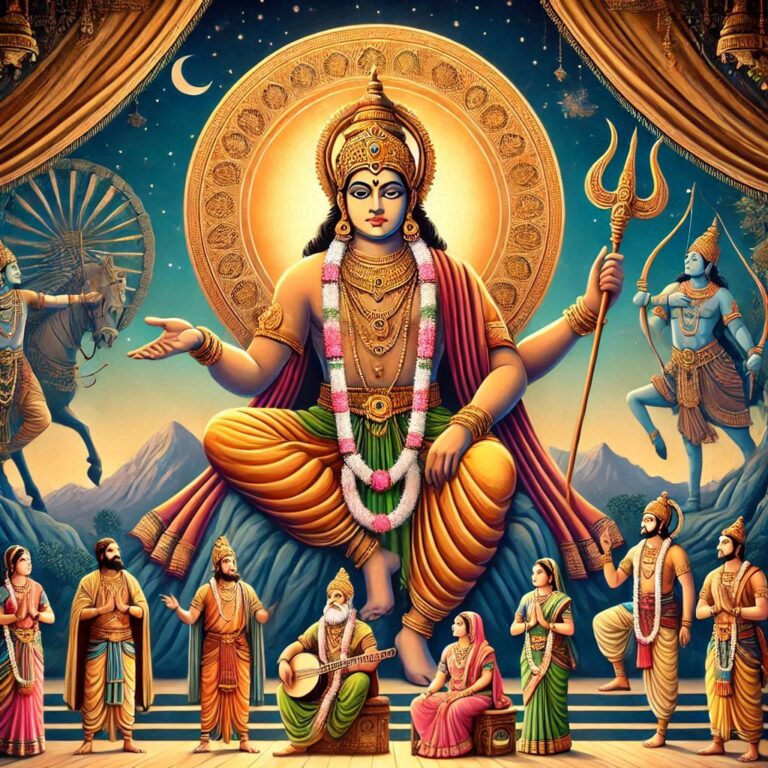Sita’s Hermitage Life and the Birth of Her Children
The Quiet Strength of Sita: Life in the Hermitage and the Birth of Her Children
Sita, a name that resonates deeply within the realm of Indian mythology, embodies the essence of resilience and loyalty. Her life in the hermitage, especially during her exile, is a beautiful tapestry of strength, devotion, and nurturing. In this article, we’ll delve into the nuances of Sita’s hermitage life and explore the birth of her children, Luv and Kush, who symbolize hope and virtue. Let’s embark on this enriching journey together, where ancient tales intertwine with modern interpretations.
Sita’s Journey to the Hermitage
Sita’s life took a dramatic turn when she was forcibly exiled by her husband, Lord Rama, the epitome of dharma. The moment she stepped into the hermitage, a significant chapter began—a phase marked by solitude, introspection, and immense strength.
Imagine being driven away from your home, stripped of your comforts, and thrust into a world filled with challenges. Sita accepted her fate with grace and serenity. Living in the forest, she faced the harsh realities of life outside the palace but found solace amidst nature’s beauty.
Understanding the Hermitage Life
Life in the hermitage wasn’t just about survival; it was a platform for spiritual growth and fortitude. The hermitage, a place secluded from societal norms, offered Sita space to reflect and practice her beliefs. Here are some critical aspects of her hermitage life:
- Embracing Nature: Nature became Sita’s companion. The rustling leaves, the chirping of birds, and the gentle babbling of rivers created a soothing environment around her. This connection with the earth helped her stay grounded during turbulent times.
- Spiritual Practices: Sita’s hermitage life included rituals and prayers, reinforcing her connection with the divine. She immersed herself in spiritual practices, drawing strength from her faith.
- Resourcefulness: Sita embodied resourcefulness. With little more than her determination and skills, she utilized available resources to create a sustainable life. She foraged for food, made her own clothes, and even tended to animals that frequented her residence.
Sita’s existence in the hermitage isn’t just a tale of survival; it teaches us the essence of adapting to our circumstances and finding strength within.
The Birth of Luv and Kush
Sita’s life took another significant turn when she gave birth to her twins, Luv and Kush, in the hermitage. Their births symbolize a new beginning, an embodiment of Sita’s hope and love.
Imagine Sita—after enduring loneliness, she finally embraced the joys of motherhood. Bringing new life into the world not only revitalized her spirit but also connected her to the future.
The Significance of Luv and Kush
- Inheritors of Virtue: Luv and Kush weren’t just ordinary children. They inherited their mother’s strength and their father’s righteousness. Their lives became a continuation of their parent’s legacy, embodying virtues taught through their stories.
- Mythical Talents: Upon growing up, Luv and Kush exhibited remarkable skills. They were trained in the arts of war and poetry, embodying a perfect blend of bravery and creativity.
Their clandestine birth and upbringing in the hermitage represent a broader narrative in which love, courage, and ethics form the foundation of human existence.
A Closer Look at Sita’s Resilience
It’s essential to recognize how Sita’s resilience is reflected in her experiences during her hermitage life. Far beyond a mere survivor, she emerged as a symbol of strength—a fierce protector of her family and values.
Emotional Trials
The emotional toll of Sita’s life was immense. Imagine facing public scrutiny and isolation, yet continuing to hold your head high. Sita’s trials were interwoven with profound lessons on resilience:
- Facing Societal Judgment: Sita dealt with the judgment and alienation that came with being a woman in a patriarchal society. Her strength was not just physical but also emotional, navigating through isolation without losing her dignity.
- Finding Inner Peace: In the quiet of the hermitage, Sita practiced meditation and devotion. The practices allowed her to cultivate inner peace, transforming her solitude into a path of self-discovery.
Do Not Forget Your Roots
Sita’s story resonates beyond mythology, carrying timeless lessons. Here are a few teachings gleaned from her experiences:
- Acceptance: Acceptance of one’s circumstances can lead to personal growth.
- Strength in Solitude: Solitude is not a curse; it can be a sanctuary for self-realization and rejuvenation.
- Motherhood: The journey of motherhood is filled with challenges, yet it reveals profound strength, love, and purpose.
Inspirational Dohas and Shlokas
To deepen our understanding of Sita’s character and her journey, let’s explore some enlightening dohas and shlokas that capture her essence:
-
Doha:
‘संतोष है जब साथ हो, दुख कैसा लेता है,
सच्ची भक्ति से मिलती है, हर द्वार सुख देता है।’
(Santoṣa hai jab sātha ho, duḥkha kaisa letā hai,
Saccī bhakti se miltī hai, hara dvāra sukha detā hai.)**Translation:** When contentment is present, what sorrow remains? True devotion brings happiness to every door.
-
Shloka:
‘या देवी सर्वभूतेषु मातृरूपेण संस्थिता,
नमस्तस्यै, नमस्तस्यै, नमस्तस्यै, नमो नमः।’
(Yā devī sarvabhūteṣu mātṛ rūpeṇa saṁsthitā,
Namastasyai, namastasyai, namastasyai, namo namaḥ.)**Translation:** To the goddess who resides in all beings as the Mother, we bow to her, we bow to her, we bow to her again and again.
-
Doha:
प्रेम से जी लेना संजीवनी, कर सदा अपने साँचो।’
(Kaṭhōra karma se na bhāgo, karma se khud ko sāṅcho,
Prema se jī lena sañjīvanī, kara sadā apane sāṅcho.)
**Translation:** Don’t shy away from hard work; make yourself true through your actions. Live with love, and you’ll find the essence of life.
-
Shloka:
‘ब्रह्मार्पणं ब्रह्म हविः, ब्रह्माग्नौ ब्रह्मणा हुतम्,
ब्रह्मैव तेन गन्तव्यं, ब्रह्मकर्म समाधिना।’
(Brahmārpaṇaṁ Brahma haviḥ, Brahmāgnau Brahmaṇā hutam,
Brahmaiva tena gantavyaṁ, Brahma karma samādhinā.)**Translation:** The offering is Brahman; the oblation is Brahman; by Brahman, it is offered into the Fire of Brahman. Brahman is that which is to be attained by him who performs action pertaining to Brahman.
-
Doha:
‘मैंने तो कष्ट नहीं देखा, जिसने लिया धैर्य साँचो,
धीरज धर, सुखिया रहता, जीवन में आता न संतोषो।’
(Mainē tō kaṣṭa nahīn dekha, jisnē liyā dhairya sāṅcho,
Dhīra dhar, sukhiyā rahtā, jīvan mẽ āta na santoṣo.)**Translation:** I have not seen hardship, for he who possesses patience finds contentment in life.
Conclusion
Sita’s life story in the hermitage, filled with heartaches and immense love, isn’t just a tale from the Ramayana; it’s a mirror reflecting feminist strength, resilience, and the profound experience of motherhood. Her journey compels us to consider the trials faced by many women, often secluded yet transforming their circumstances into arenas of personal growth.
In our fast-paced modern lives, we can draw powerful lessons from Sita’s life. She teaches us that true strength lies not just in external power but in the quiet, enduring spirit of resilience and love.
FAQ
-
What was Sita’s main role in the Ramayana?
- Sita served as a symbol of virtue and fidelity, representing the ideal woman and mother in the narrative.
-
How did Sita support herself in the hermitage?
- She utilized her skills and knowledge of nature, foraging for food, and performing spiritual practices to maintain her well-being.
-
What lessons can we learn from Sita’s experiences?
- Sita teaches us about resilience, the importance of inner strength, and the value of accepting our circumstances.
-
Who are Luv and Kush, and what do they represent?
- Luv and Kush are Sita’s sons, representing hope and virtue, embodying the righteous legacies of their parents.
-
How does Sita’s story resonate in modern society?
- Sita’s journey remains relatable, symbolizing the struggles faced by women today and the courage required to face societal challenges.







